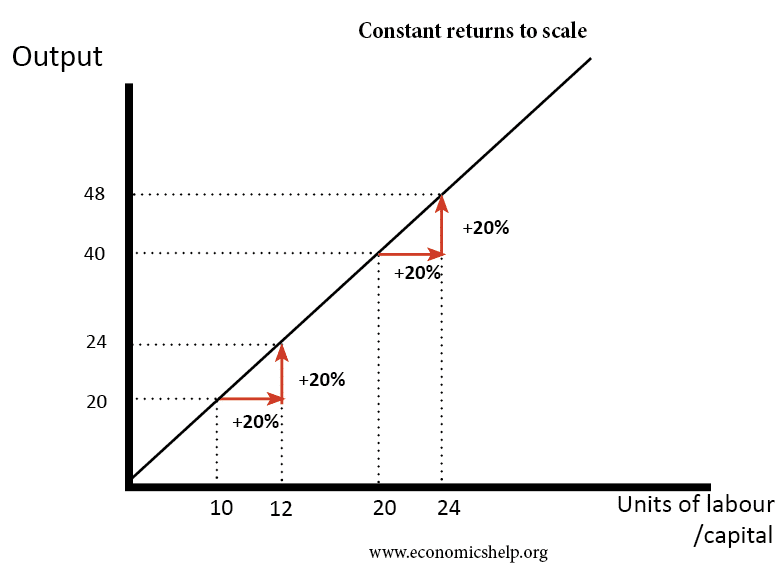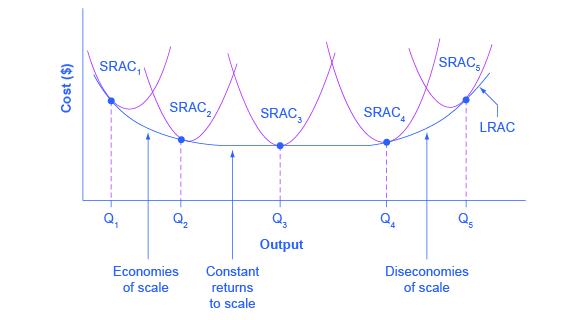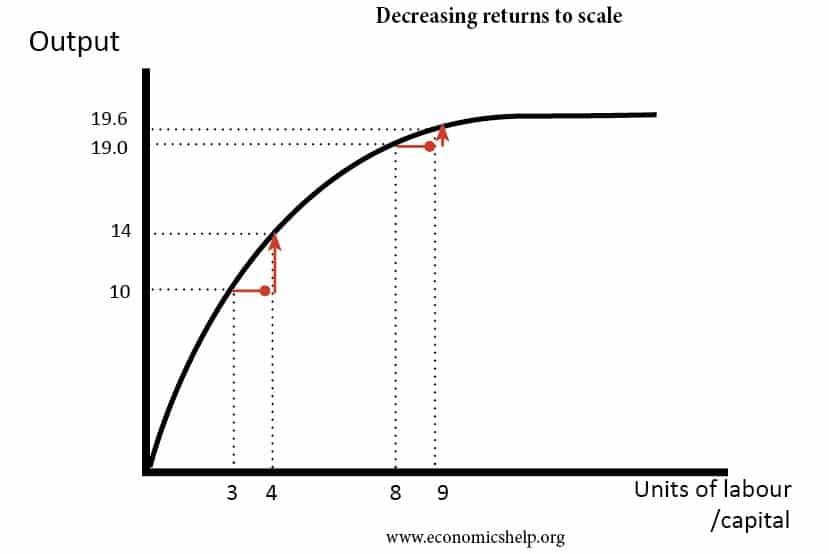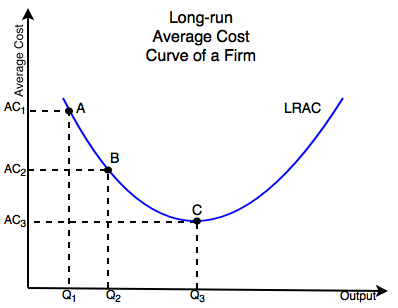Q 5 Km Lm 5KLm 2 Q m 2. Solved Question on Economies and Diseconomies of Scale.

Constant Returns To Scale Economics Help
A medium factory like M produces 2000 alarm clocks at a cost.

. A medium factory like M produces 2000 alarm clocks at a cost of 8 per clock. A constant return of scale is an economic condition where a companys inputs like capital and labor increase at the same rate as their outputs or value of their goods. Economies of Scale A small factory like S produces 1000 alarm clocks at an average cost of 12 per clock.
When a company has a constant return to scale it may benefit from economies of scale. Constant Returns to Scale vs. It is worth noting that the assumption of economies of scale in production can represent a deviation from the.
In a situation where a firm experiences constant returns to scale there are likely to be fewer economies of scale but this. For example a company uses A as an. Constant returns to scale refer to the output reflected.
The savings come from spreading the cost of production over a larger number. Economies of Scale is the concept referring to a business event where the price of an item or product decreases as the production of the same item or. As a result we have constant returns to scale.
Returns to Scale in. Economies of Scale A small factory like S produces 1000 alarm clocks at an average cost of 12 per clock. Total cost rises at the same rate as output rises.
Economies of Scale and Perfect Competition. Constant economies of scale. In the long run if a very small factory were to expand its scale of operations it is likely that it would initially experience.
Constant economies of scale means that it needs the double amount of all production factor inputs ie. In that context we can distinguish between 1 economies of scale 2 diseconomies of scale and 3 constant returns to scale. The LRAC of the firm keeps falling with the increase in the production of units.
Constant economies of scale describe a situation in which an increase in produced units leads to no change in the ratio of input and output. In microeconomics economies of scale are the cost advantages that enterprises obtain due to their scale of operation and are typically measured by the amount of output produced per unit. Economies of scale means that production gets cheaper when more units are produced up to a certain point.
Again we increase both K and L by m and create a new production function. Labour and capital to exactly double the output produced. Constant Returns to Scale Economies of Scale.
Lets examine the difference between constant returns to scale and economies of scale. 1 Economies of Scale It is a state where the firm experiences the highest operational efficiency. This section over here as the long-run average total cost is going up that would be our diseconomies of scale.
Goolsbee Levitt Syverson 2016 Microeconomics Worth Publishers. But this section over here where it is constant you might guess what. This may arise as a result of buying the inputs in large quantities which lowers the cost.

Constant Returns To Scale Economics Help

Economies Of Scale Energy Education
:max_bytes(150000):strip_icc()/MinimumEfficientScaleMES2-c9372fffba0a4a1ab4ab0175600afdb6.png)
0 Comments